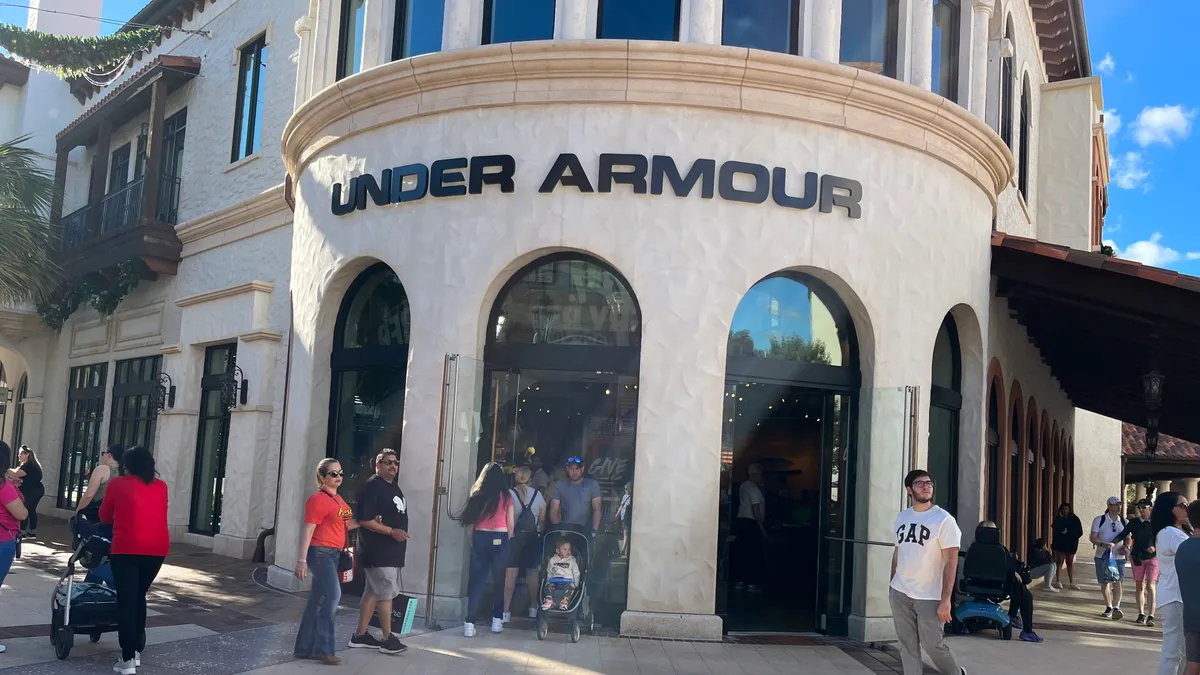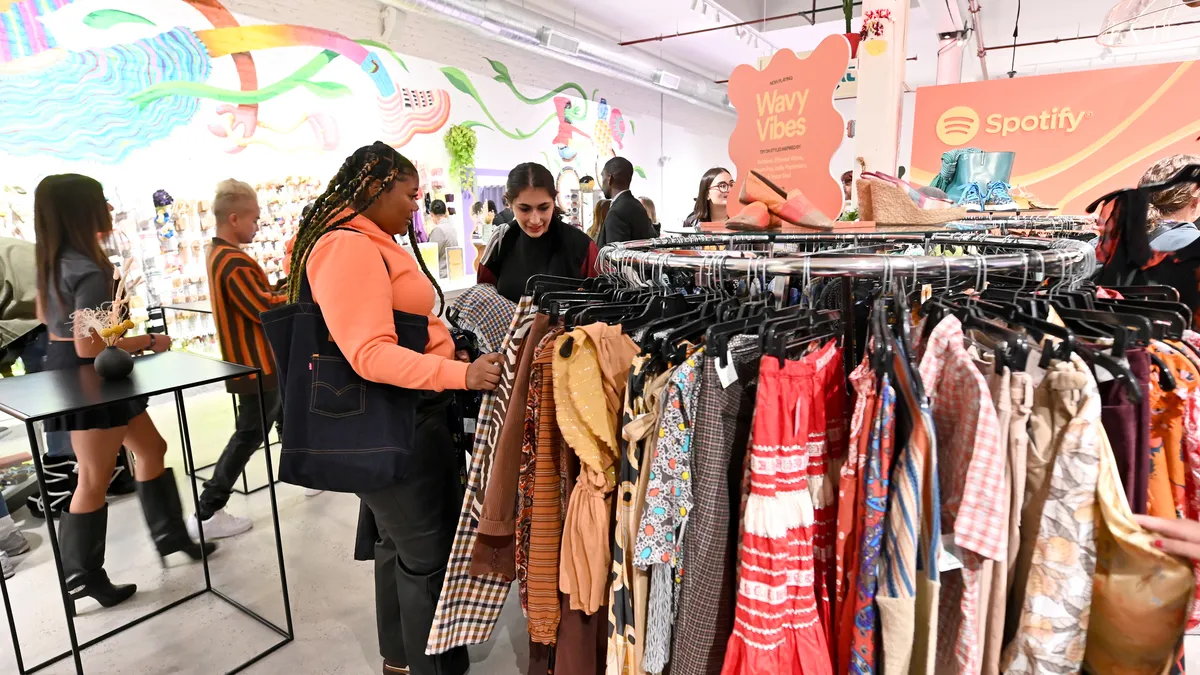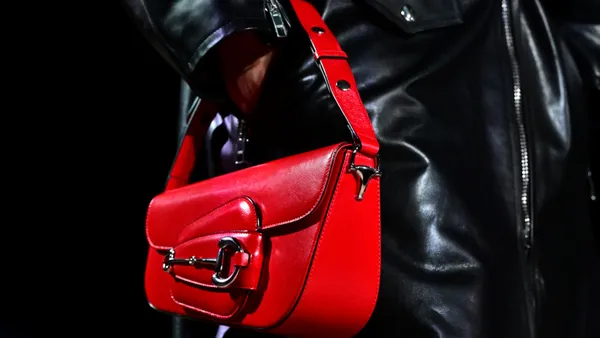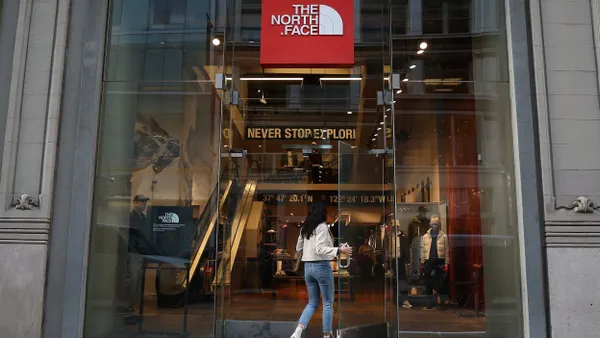Dive Brief:
- As new CEO Stephanie Linnartz takes over at Under Armour, the athletics retailer reported fourth quarter revenue growth of 8%, to $1.4 billion. For the full year, sales were up 3% to $5.9 billion, according to a company press release.
- On a call with analysts, Linnartz outlined a new strategy, dubbed “Protect this House 3,” with three main priorities: drive global brand heat with a focus on the U.S.; deliver elevuiated design and product with a focus on footwear, women’s and sportstyle; and drive U.S. sales.
- For fiscal 2024, revenue is expected to be flat and capital expenditures are expected to be between $250 million and $270 million as the retailer executes on its turnaround initiatives. Linnartz projected that Under Armour would return to growth in North America in 2025 where the retailer saw sales decline 1% this year.
Dive Insight:
The primary emphasis on Linnartz’s first earnings call at Under Armour was reigniting growth at a brand that has lagged behind its competitors in the athletics space. For example, Lululemon, which surpassed Under Armour by reaching $6 billion in revenue in 2021, grew 30% last year to $8.1 billion.
A large part of the retailer’s strategy is pivoting to a more athleisure or “sportstyle”-focused offering, which executives said would triple the company’s total addressable market to $300 billion. Founder Kevin Plank called the shift to sportstyle a “significant evolution” for the brand, which has primarily spent its time on performance product while the rest of the industry has shifted to cater to athleisure.
Some changes have already begun, with GlobalData Managing Director Neil Saunders noting “corrective steps” that include adding more fashion to its apparel lines.
“This initiative started off well, but we feel the latest efforts have fallen somewhat flat and give the brand a muddled position between trying to appeal to performance athletes and the casual, everyday shopper,” Saunders said. “Lululemon straddles this divide much better by having a unified focus on performance and innovative fabrics and features across all its lines. Under Armour needs to learn from this and attempt to take a similar stance – something that is admittedly easier said than done.”
Under Armour’s sportstyle offering will be particularly focused on women and footwear, which are two growth areas for Under Armour overall. On the footwear front, Plank said the company needs to move from a footwear culture to a sneaker culture, shifting its product focus so that its shoes show up not just on fields of play but also in situations like the NBA’s tunnel walks, which have become a method for players to show off their style. The retailer is also emphasizing product freshness and will reintroduce past “greatest hits” with a new spin to drive interest.
When it comes to reaching women, Linnartz said the demographic makes up just a quarter of the brand’s revenue and that Under Armour has failed to create a must-have product for women thus far.
“The consistency of great design, fit and the all-important style factor across the entire offering is not where we need it to be,” Linnartz said. “We will go after women harder than this company has ever seen. Full stop.”
Digital also needs work, with Linnartz calling out changes that need to happen for both the website and the app. And the retailer plans to give more love to some of the other sports it plays in, including golf, which Linnartz said has been “underserved.” Under Armour will launch a more premium collection with a designer later this year, in partnership with brand ambassador Jordan Spieth.
To support this new vision, the company is looking to hire a host of new leaders, including a chief communications officer, a chief consumer officer, sneaker and branding experts, and marketing and commercial talent. In March, the company announced another long-term partnership with NBA superstar Steph Curry who will continue his basketball efforts, but will also work with the brand in golf, women’s, youth and sportstyle categories.
The retailer is also planning to expand its store footprint, opening more in malls and other areas where Under Armour feels it is underpenetrated. New stores will be smaller, focus more on storytelling and customer service, and will showcase the company’s new sportstyle positioning.
“Growth is, without a question, our highest priority,” Linnartz said.













